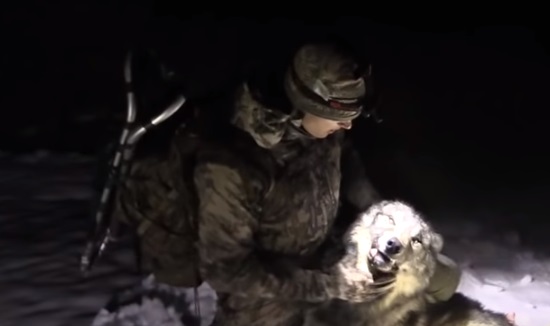
Rapidly removing a large portion of the animals will likely harm their natural reproduction process and ensure that new births cannot restore the population to its 2020 size, according to scientists. The two hunts in Wisconsin could have a devastating long-term impact on gray wolves in the Great Lakes region and the ecosystem in which they live, some experts say. On August 11 the Wisconsin Natural Resources Board, which sets natural resources policy for the state, approved a quota of up to 300 additional wolves to be hunted in the fall season, starting on November 6. Now the wolves are set to face hunters a second time this year. “The state was trying to maintain a tolerable level of mortality” through the February hunt, says Adrian Treves, a carnivore ecologist at the University of Wisconsin–Madison and an author of the study. But the study argues that the state agency’s calculations failed to keep the population stable. When it announced the harvest quota for the February 2021 hunt, the Wisconsin DNR said its goal was to neither increase nor decrease the gray wolf population.

In it, researchers estimate that nearly one third of the state’s total wolf population was wiped out during that time, bringing the real figure to somewhere between 695 and 751 animals by mid-April. That works out to about 21 percent of the state’s 2020 population estimate of 1,034 of the animals, which would leave 816 in Wisconsin.īut the actual number of Wisconsin wolves that have perished in the past year is higher, according to a recent study published in Peer J–Life & Environment. But the lawsuit forced its hand, and between February 22 and 24, hunters killed 218 wolves, according to the Wisconsin DNR. The state initially planned to wait for the fall of 2021 to hold a harvest. Wisconsin law had required an annual hunt to occur between mid-October and the end of February if the gray wolf was delisted. Wisconsin moved swiftest of all, implementing a “harvest” this past February after a hunting advocacy group sued its Department of Natural Resources (DNR) to schedule an immediate wolf hunt. Meanwhile Montana and Idaho, whose wolf populations have been delisted since 2011, have loosened restrictions: In April Montana legalized the use of snares to capture wolves, and in May Idaho passed a law allowing the cull of 90% of the state’s population by nearly all means, including shooting from helicopters or ATVs. Michigan and Minnesota are in the early stages of planning potential hunts in 2022. This removed them from federal protection and left management of the species up to individual states. Department of Fish and Wildlife deemed gray wolves’ recovery so successful that it fully “delisted” the canids from the ESA starting on January 4, 2021. These iconic roaming carnivores are at a crossroads again, following a decision-making process initiated in 2019.


In a remarkable conservation success story, the 1973 Endangered Species Act (ESA) helped push the number back up to about 7,500 gray wolves in the lower 48 states as of 2020. But by the 1950s decades of overhunting and habitat loss had nearly extirpated the species in the contiguous United States. Gray wolves once roamed the entire North American continent, from the scrubby deserts of Mexico to the boreal forests of Alaska.


 0 kommentar(er)
0 kommentar(er)
